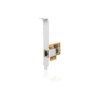I’ve written about this already a few times in various IETF / RIPE lists, but it seems to be relevant to the current draft as well, so here is a repeat:
According to the usecases draft, SSPs report the public identities of their customers to the registry so that the registry can store the mapping to destination groups. All fine and dandy for TN based public identities, but what about sip:user@domain?
These URIs come in (at least) two flavors:
a) the domain is the provider’s domain (e.g. “verizon.com”)
b) the domain is owned by the customer (e.g. “shockey.us”)
The first one makes it easy for the SSP to authoritatively tell the registry that it provides service for whatever URI it is going to provision. So from the point of drinks, this is easy.
[I still very much doubt that solely offering such PIs to customer is dangerous to the SSPs as they might be forced to offer PI portability, which would really mess up a lot of assumptions.]
So what about b)? Portability is a given, and ISPs are used to deal with customer-owned domains for email and web. Good. So what’s the authorization mechanism? For email and the web it’s simple: the entity which controls the domain must set the respective MX and CNAME/A records so that the rest of the world know who provides email/web services for this domain. If the control over the domain changes, so does instantly change the control over email and the website.
Now, if a SSP can provision any URI regardless of the domain ownership status / domain content, this opens up a pandora’s box of interesting errors. We now duplicate who operates SIP service for a domain in two databases which can and will run out of sync with each other.
I consider it thus a lot more in line with the rest of the Internet protocols to store the mapping domain -> destination group in the DNS and not some other registry.

